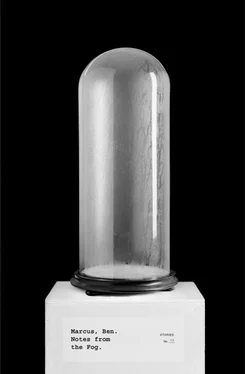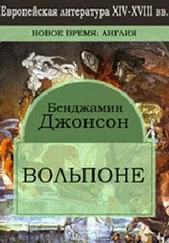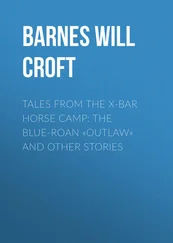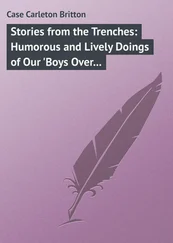As they close in around him, I turn back to my window, which no doubt will be recording all there is to see, the shadows moving and thumping—a struggle so soft and magically gentle that one must fairly wonder about complicity, the way animals with rope will actually bind themselves to a post, the way, in the athletic footage, a man will crumple microseconds before he is tackled. Who among us, after all, does not dream of being elected for a smothering?
—
Our final criteriafor men, including the detective, should be this: How do they look once felled? All of us should be knocked to the floor and finally judged asprawl. The detective is down. I do not think he will rise again.
In his pocket I find a Ziploc bag, unopened, featuring a clouded bolus of paste. The grease that never went to the lab. On his notepad I discover text for the items that he is meant to purchase at the grocery store, etched in a script adorned by his curly enforcements, his to-do lists. The technique of his doodling hand is not as precise as I might have guessed, particularly for a man trained in unknown whereabouts, a whereabouts specialist. I would have hoped for an architectural style, a man who drew buildings or at least boxes and geometrical shapes linked with suggestive vectors. Systems and such, the blueprints to an interrogation room. Perhaps some numerical formulas. The suggestion that he has mastered his world and might soon launch a powerful campaign. Instead he is a balloonist, a man whose handwriting diminishes the meaning of everything he writes, infantilizing the people and trivializing the objects. This is handwriting that will take many days to undo, language that now must be unraveled and forced to lie flat, in a single line, meaning nothing once again.
We will take the words out of his book, as if they’d been written in a single miles-long piece of thread, and we will stretch the thread taut, until no more words gargle up, until uttering them out loud is simply to breathe. However long it takes.
I crouch down closer, against the last outgoing heat of him, where the air is still adjusting to the loss, closing in on the space he once occupied, and I see the hairy particulars of one man’s escape. Sometimes you can smell a hole even if you can’t see it. It is, I must admit, a hole I’d rather fancy entering myself, and I can imagine the flush of applause such a departure would excite, the signature admiration my descendants would feel for me if I crawled from life in plain sight and left nothing but questions. Questions and envy. Is it what my father felt when he left us? Pride and joy and fear and delight?
Nathaniel Hawthorne said that each question we ask is a costume for fear. We spend a lifetime getting out of costume, removing layer after layer, but most of us, he says, run out of time. We die too soon, still wearing the mask, the cloak, the cape, the paint on our faces. What can we do for our friends but help them along in this endless, complicated disrobing?
I beckon to my mother, to Rogerson, to Mattingly, and together we crouch down against the cold shape of our friend and get to work, removing from him everything that has ever stood in the way of showing who he really is—the disguises, the clothing, the skin, the inner shield. Piece by piece we take that man apart.
In the year of I Can’t Breathe,a hospital occurred on the island. The building was fashioned, rather quaintly, of matter. Bricks, windows, smoke. The hospital used flesh traditionally—draped over the anguished little need machines we call people. Space was pushed through rooms, to keep them from collapsing, or so it seemed. In truth, no one understood how such a spectacle could remain stable. Religion and science broadcast a distant wisdom, no different from birdcalls, and actual birds policed a space the size of the whole world.
The air was breathable. The scale, despite appearances, was one to one.
One commends the level of detail in this realistic hospital. Even the most advanced scrutiny did not reveal rigging. Blood tended to be housed inside puppets, who, in a surprising touch, were represented by actual people, pulled into the space and dosed with purpose. Traces of bone were found in the air, a dust misting over the island. The use of bone in such a way felt far too obvious, almost embarrassing. In other words, this spectacle was supposed to seem like it was taking place right now, in our own world. A full set of chemical tests were not conducted, but one felt, after witnessing the hospital and the elaborately created area around it, a strenuous petition to exist, as forceful as any area anywhere, ever.
Part of the suspense, in participating in this hospital and its surroundings, involved the mystery of who would do what and what would happen. The hospital neither increased nor decreased one’s curiosity. If mood alteration was at work, or indeed any manipulation of emotion, it was being done environmentally.
The buildings behind the hospital, in an interesting touch, were real. In the distance beyond the island loomed another island, attached to a skyline of actual buildings, many of which must have taken years to erect, and beyond that, a vague landscape was inferred, a possible continent, as if this was all taking place in a kind of world. Even different weather erupted in these other areas. A tremendous amount of care was taken to create details in the very far distance beyond the hospital, as if the materials elsewhere, in a space that was days away on foot—not that we could ever travel there—were just as important as the materials right in front of us. One heard reports of people perishing hundreds of miles away. Real people were born and lived out their lives never hearing of the hospital. Even the waterway bordering the island was fabricated with real water. Such a democratic approach to detail is troubling. It amounts to a celebration of technique, suggesting a creator slightly too satisfied by method, showcasing a skill, as if the making of something mattered more than that thing’s purpose.
Is not real water a dull choice here? Water, perhaps the most overused substance of our time. And so much of it. Actual water even at the greatest of depths, surrounding the island, running under it. It is not clear who is meant to appreciate such effects, or why, more importantly, a valuable resource is made so glaringly inaccessible. One senses a kind of hostility in the gesture. A taunt.
Even after we have gotten the point, the point keeps getting made.
The hospital staged a series of exhibits, punctuated by intervals called the workday, evening time, the shadow, and a fourth category of time that would seem to have never been named. Night and day occurred on schedule, but something felt wrong, as if the whole notion of time had simply been given too little attention in the first place, unless its very design was meant to cause deep ambivalence and dismay.
At the hospital, for instance, the day might feel too long, the night too short, or the night was too long, followed by a series of short, secondary nights and then a sudden flash of day, which seemed to never end. People expired at a steady rate, regardless of the time, but for some reason, one could not hear little popping noises each time someone died. It would have been so easy to implement such an effect, a little popping noise when someone died, so that to live and to sleep and walk the earth would be to listen to a steady stream of popping noises, marking death in the vicinity.
Sometimes at the hospital, just when night would seem to have expired, night continued to deepen instead, achieving levels of darkness heretofore thought impossible, with the hospital presumably hidden inside this purely dark fold, operating as usual, even while night kept bursting deeper, with people now expiring at an accelerated rate, faster than they were being born. An accurate measurement of the true passage of time could not be obtained. The fourth interval was determined to go unnamed. The people, too, if that’s what they really were—a definitive test was impossible—would be unnamed. That whole part of the world could feel likewise unnamed. On a map the area would be blurry, never quite coming into focus.
Читать дальше











